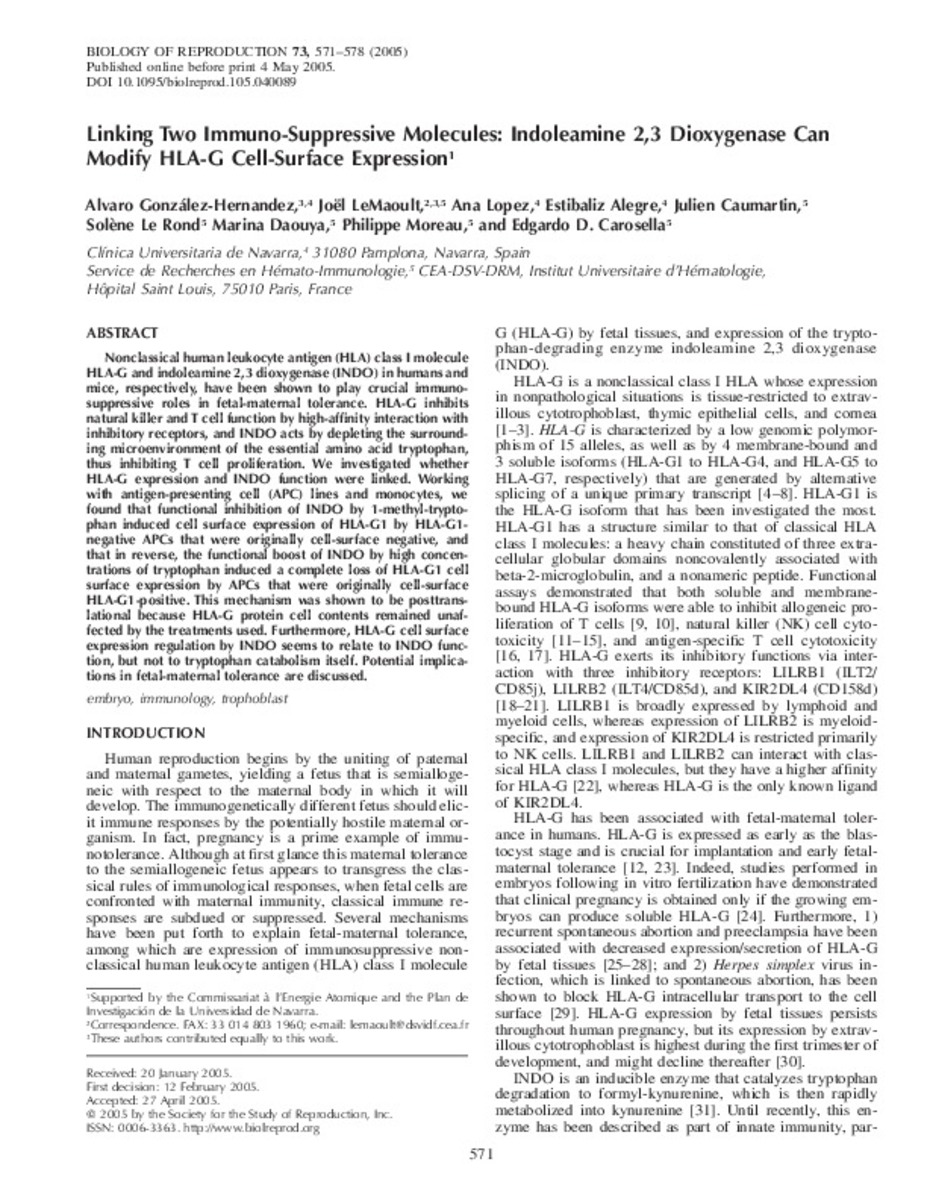Linking Two Immuno-Suppressive Molecules: Indoleamine 2,3 Dioxygenase Can Modify HLA-G Cell-Surface Expression1
Keywords:
Embryo
Immunology
Trophoblast
Publisher:
Society for the Study of Reproduction
Citation:
Gonzalez-Hernandez A, LeMaoult J, Lopez A, Alegre E, Caumartin J, Le Rond S, et al. Linking two immuno-suppressive molecules: indoleamine 2,3 dioxygenase can modify HLA-G cell-surface expression. Biol Reprod 2005 Sep;73(3):571-578.
Statistics and impact
0 citas en

0 citas en

Items in Dadun are protected by copyright, with all rights reserved, unless otherwise indicated.











